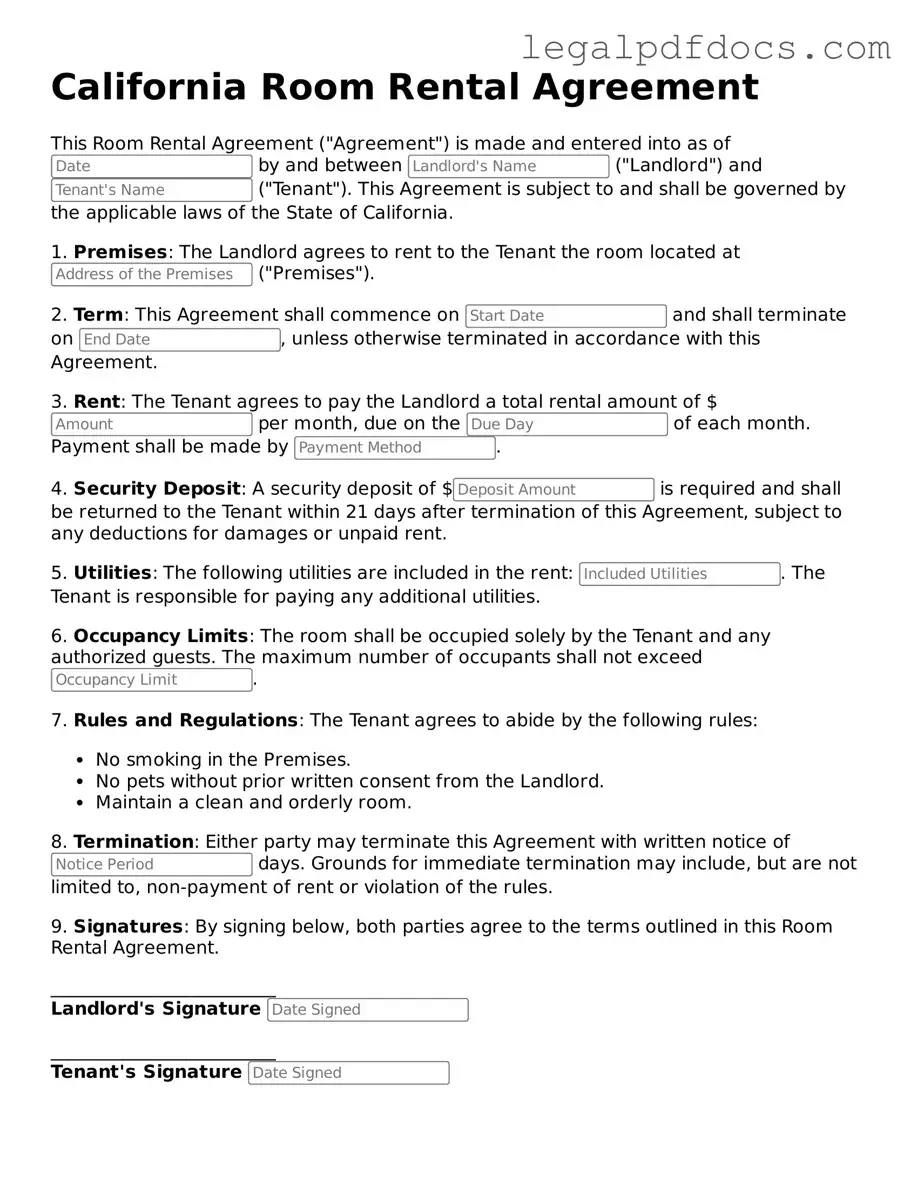Official Room Rental Agreement Form for California
The California Room Rental Agreement is a legal document that outlines the terms and conditions between a landlord and a tenant for renting a residential property. This form serves to protect the rights of both parties while establishing clear expectations regarding rent, maintenance, and other responsibilities. For a smooth rental experience, consider filling out the form by clicking the button below.
Open Room Rental Agreement Editor Here
